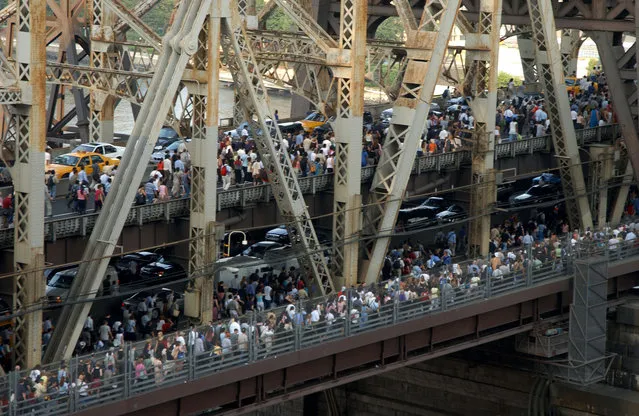
Pedestrians and traffic leaving downtown Manhattan crossing the Queensboro Bridge after the onset of the largest power blackout in American history, August 14, 2003. The Northeast blackout of 2003 was a widespread power outage that occurred throughout parts of the Northeastern and Midwestern United States and the Canadian province of Ontario on Thursday, August 14, 2003, just after 4:10 p.m. EDT. Some power was restored by 11 p.m. Many others did not get their power back until two days later. In more remote areas it took nearly a week to restore power. At the time, it was the world's second most widespread blackout in history, after the 1999 Southern Brazil blackout. The outage, which was much more widespread than the Northeast Blackout of 1965, affected an estimated 10 million people in Ontario and 45 million people in eight U.S. states. The blackout's primary cause was a programming error or “bug” in the alarm system at a FirstEnergy Corporation control room in Ohio. The lack of an alarm left operators unaware of the need to re-distribute power after overloaded transmission lines hit unpruned foliage, triggering a “race condition” in the energy management system software, a bug affecting the order of operations in the system. What would have been a manageable local blackout cascaded into massive widespread distress on the electric grid. (Photo by Robin Platzer/FilmMagic)
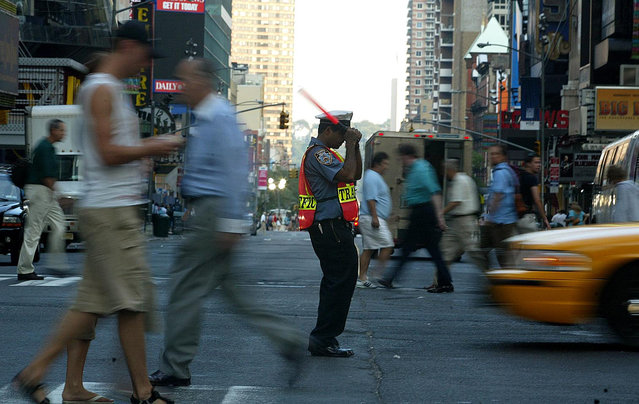
A policeman controls traffic at 42nd Street and 7th Avenue as New York City remains without electricity caused by a blackout that affected the entire city and most of the eastern part of the nation August 15, 2003 in New York, New York. More than 50 million people were affected by the outage, in Toronto, Detroit, Cleveland and New York City. (Photo by Jose Jimenez/Primera Hora/Getty Images)
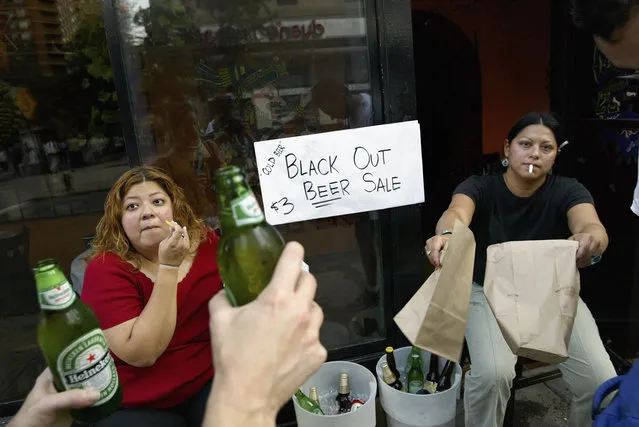
People sell beer on the street during a massive blackout August 14, 2003 in New York City. Officials from the Department of Homeland Security said there were no indications that terrorists were responsible for the blackout that has also affected Ohio, and Canada. (Photo by Spencer Platt/Getty Images)
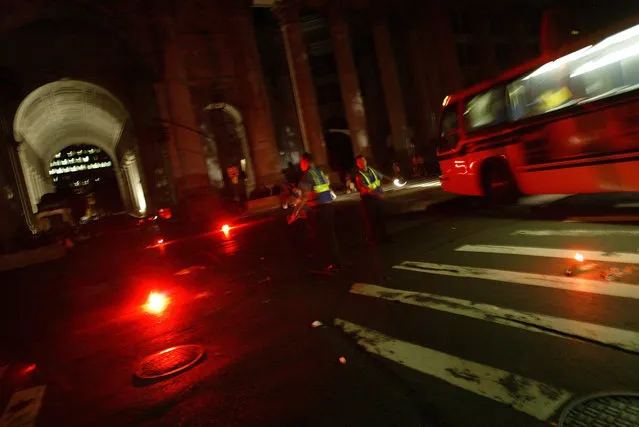
Police direct traffic with the aid of flares on August 14, 2003 during a power outage in New york City. Power went out across the East Coast in the United States Thursday afternoon. (Photo by Spencer Platt/Getty Images)
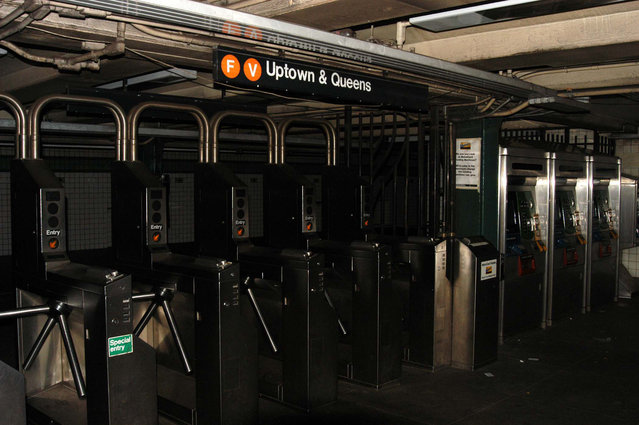
Subway station at 23rd street and 6th avenue is empty after New York was hit by the largest power blackout in American history, August 14, 2003. It stranded thousands of commuters, trapped subway riders underground and created a transportation nightmare. (Photo by Jason Nevader/WireImage)
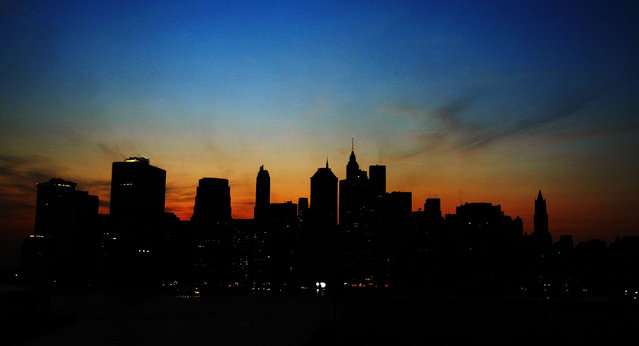
Sun sets over the Manhattan skyline August 14, 2003 during a major power outtage affecting a large part of the north eastern United States and Canada. (Photo by Robert Giroux/Getty Images)
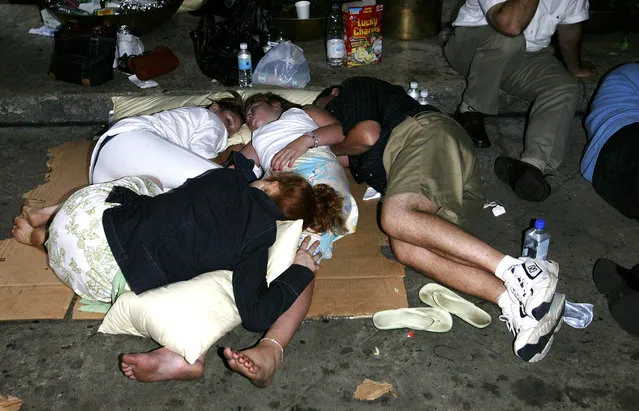
People sleep outside the Marriot Marquis Hotel during the east coast blackout August 15, 2003 in New York City. (Photo by Matthew Peyton/Getty Images)
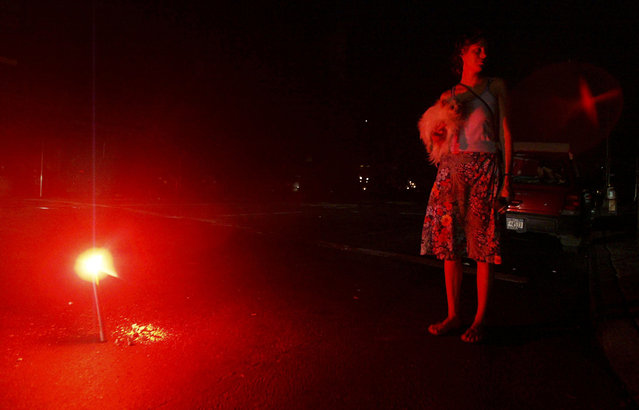
A woman holds her dog whilst she stands next to a flare during a massive blackout August 15, 2003 in New York City. Power is slowly returning to certain parts of the city. (Photo by Mario Tama/Getty Images)
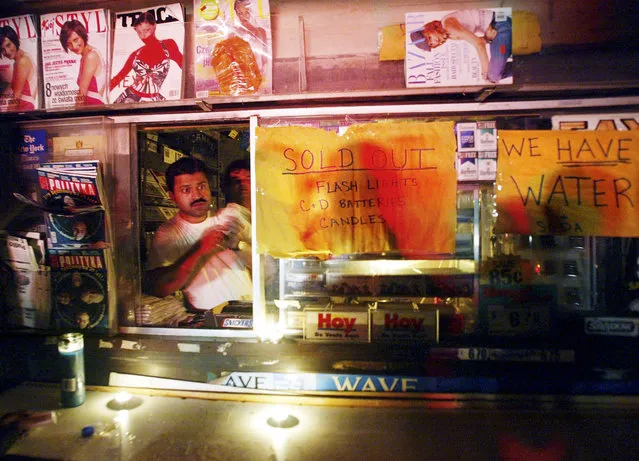
A vendor stands in his candlelit store window with signs reading “We Have Water” and “Sold Out Flashlights Batteries Candles” during a massive blackout August 15, 2003 in New York City. Power is slowly returning to certain parts of the city. (Photo by Mario Tama/Getty Images)
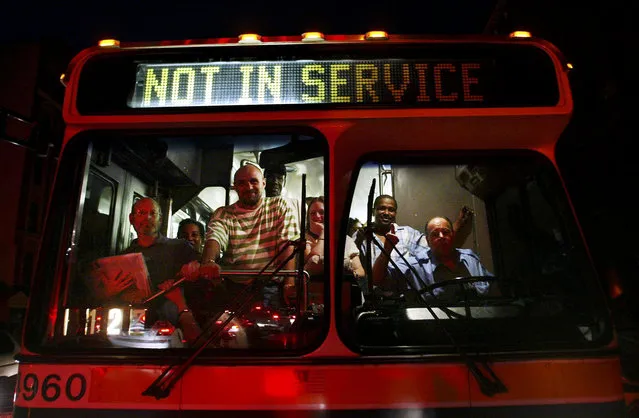
Commuters stand in a bus displaying “Not in Service” during a massive blackout August 15, 2003 in New York City. Power is slowly returning to certain parts of the city. (Photo by Mario Tama/Getty Images)
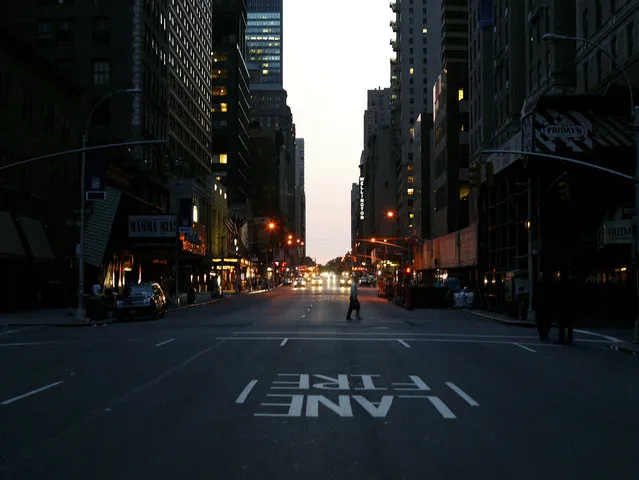
The first lights come on at 53rd and Broadway during the east coast blackout August 15, 2003 in New York City. (Photo by Matthew Peyton/Getty Images)
17 Aug 2017 07:43:00,
post received
0 comments
